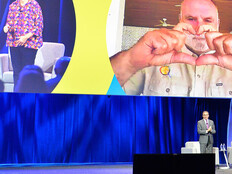Many healthcare leaders say patients now expect these digital conveniences and that offering them helps providers stay competitive.
“You are transforming a very entrenched, manual, time-consuming process into something that’s automated, electronic, patient-friendly and tech-enabled — and that’s a huge transformation,” Shegewi says.
For patients, completing intake tasks at home reduces wait times. For providers, digital intake systems automate insurance verification and consent management, and in emergency departments, assist with triage screening, which reduces employee burnout, he says.
Furthermore, appointment reminders and easy rescheduling options reduce no-show rates, while data quality and accuracy are improved.
“It doesn’t just improve the logistics of access to care, it also strengthens the relationship between the patient and health system,” Shegewi says. “With these changes, you promote trust, preparedness, satisfaction, convenience and accessibility.”
EXPLORE: Government hospitals enhance the patient experience with digital display technologies.
Nebraska Methodist Health System Opens Digital Patient Access
Nebraska Methodist Health System, which operates four hospitals and over 30 clinics, launched its digital access initiative in 2021 after patient feedback revealed the desire for more online capabilities.
The Omaha-based provider, which runs its Oracle Health EHR system on Oracle Cloud, previously offered a basic patient portal, but patients could not book appointments, search for available providers or fill out paperwork electronically, Hutteger says.
In 2023, Methodist integrated several third-party tools into its EHR to enable those features, including appointment reminder software that connects with its scheduling systems. In 2024, Methodist upgraded its mobile app to include doctor search capabilities.
Now, patients no longer have to call to make appointments. They can complete cumbersome paperwork beforehand. “People love it. It takes away some of the anxiety about coming to the doctor’s office,” Hutteger says.
Many patients prefer completing forms digitally at home rather than in waiting rooms, where they may feel pressure to answer quickly or feel embarrassed discussing sensitive topics such as mental health or food insecurity.
“Sometimes, it’s difficult to answer these questions on the spot,” Hutteger says. “Patients can think about it at home and complete them with help from a loved one.”














